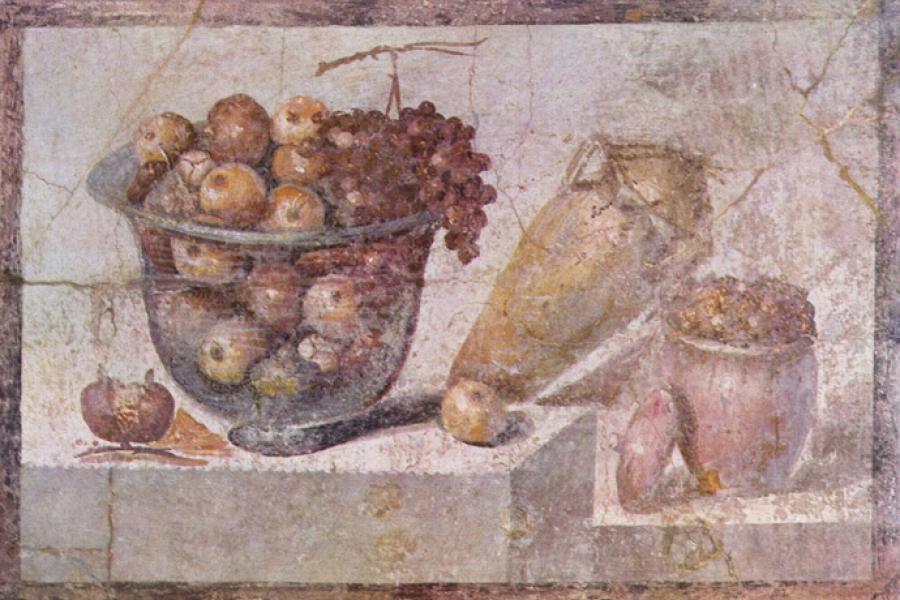Food in art
Food pictures are categorized as still life.
There is a difference on how men and women paint food. Daily life was what female artists painted. Painting kitchens and things on a table was not par of a man's world. How could male artists paint still life without losing their virility?
Food in early art history
While female artists approach still life with respect, the answer for male artists was to develop a code that makes sitll life stand for something else.
Classic times
In ancient Greece, the concept of hospitality was known as xenia. The rules in xenia included the obligation on the host to provide food and drink for the guests. The food could be simple fare, such as fruits, nuts and natural things. This kind of hospitality meant the host and guest were on equal terms with no further obligation on any part. Elaborate and luxurious food created an obligation on the guest to reciprocate.
Walls on dining rooms would be decorated with purple figs, vines, chestnuts, pears, apples, or cherries; the fruits of the land. These Greek still life works have disappeared. We only know by references.
Roman still life
Romans were partial to fresco wall painting and floor mosaics and would decorate with them their dining halls. All sorts of edible animals, fruits and vegetables were depicted; on floors as well as walls, and it looks as if the people had carelessly thrown food around.
Wall Paintings from Boscoreale, Metropolitan, NY, show some fruits on the walls as part of the painting. Meals in ancient Rome had a similar pattern to mthe modern one. The first course, or gustatio would be shellfish, eggs, or salad. The main course, cena or proper dinner, would bring a round of roasted meats. Sweetmeats and fruit would end the meal.
In the Still Life Painting with Peaches and Glass Jar, Herculaneum, Museo Nazionali di Napoli - you can see peaches indeed and jar half-filled with water.
The Glass Bowl Still Life, from the House of Julia Felix, Pompeii, Museo Nazionali di Napoli - wall painting depicting a glass bowl full of fruit.
There is a beautiful mosaic with fish from the House of the Cascades, Utica, North Africa, similar to the other fish mosaics in homes from ancient Pompeii.
Also from North Africa, Tunisia comes the unswept floor mosaic, where the floor is covered with food scraps, including eggshells, at the Bardo museum.
Early Christian and Byzantine art
Early Christians used the available media to express their art. There are fresco, mosaics, and sculptures with Christian motives. Although Christians gave new meanings to some symbols in use, they also created their own new icons, such as the fish. A sample of this early Christian symbol can be seen in this bread and fish from the catacombs of San Callisto.
There is plenty of paintings and mosaics with religious themes in the Byzantine era, but there are also art wroks depicting daily life such as the illustrations from a manuscript on Byzantine agriculture. Mauscript illustration is also a form of art practiced during the long years before printing was possible.

